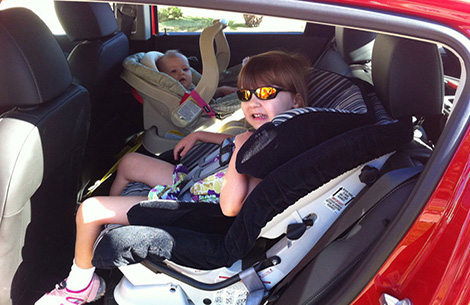
National Highway Traffic Safety Administration Seeks New Rule That Requires Child Car Seats to Withstand Side-Impacts of Up To 48 km/Hour
DETROIT — Federal regulators moved on Wednesday to address a glaring hole in auto safety rules by proposing new crash-test standards to better protect children in car seats.
The National Highway Traffic Safety Administration announced it was seeking a new rule that requires child car seats to withstand side-impact collisions of up to 30 miles an hour.
The proposal is considered a major step in a larger effort to improve the safety of car seats for small children. Up to now, federal rules have covered only how well car seats protect children in crashes from the front.
Under the proposed rule, the seats would for the first time have to pass a test that simulates a typical side-impact vehicle crash.
David Friedman, the agency’s administrator, called the proposed side-impact rule a “significant” measure that could prevent as many as five deaths and more than 60 injuries a year.
“Car seats are one of the most essential tools we have for keeping young people safe in vehicles,” Mr. Friedman said in a conference call at the Washington Auto Show. Under the proposal, manufacturers would have up to three years to alter or adjust their products to meet the new requirements. Consumers could then buy a newer model to replace older ones.
The new test is designed to assess how various car seat models protect children weighing up to 40 pounds from head trauma and other injuries in highway accidents.
The tests will position a car seat on a crash-test sled traveling at 15 miles an hour. Then the sled will be rammed from the side by another sled moving at 30 miles an hour.
The test will determine how well a particular car seat protects a child passenger from a vehicle’s door crushing, as well as the overall impact of the crash. Regulators plan to use two crash-test dummies in the tests — one that replicates a 12-month-old child and another representing a 3-year-old.
Deaths of children in car seats have been declining in recent years, to 397 in 2011, down from a total of 614 in 2002.
But while car seat restraints are considered to be effective, medical and auto safety experts said more needed to be done.
Mr. Friedman said that under the proposed a rule, every child car-seat model must pass the side-impact test before it could be sold to the public.
The rule should help parents choose car seats without relying solely on marketing claims made by their manufacturers.
Manufacturers will have up to three years to alter or adjust their products to meet the new requirements.
Mr. Friedman, who took over this week as the safety agency’s acting administrator, said he expected the agency to move aggressively on other child safety issues.
One of the most vexing problems for parents is still the confusion over how to install a child car seat.
The safety agency estimates that three out of every four car seats are installed improperly. Often times, parents need to be instructed by professionals to understand how to use various anchors and tethers that automakers are required to provide in their models.
Mr. Friedman said there may need to be more coordination of efforts between the car seat manufacturers and the auto companies.
“One of the most important things that parents and caregivers need to understand is making sure that the car seat is installed correctly, and the child is buckled in,” he said.







